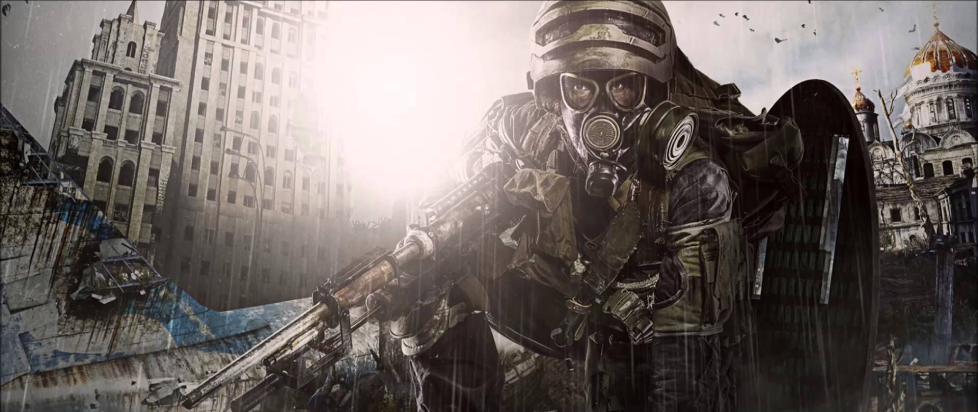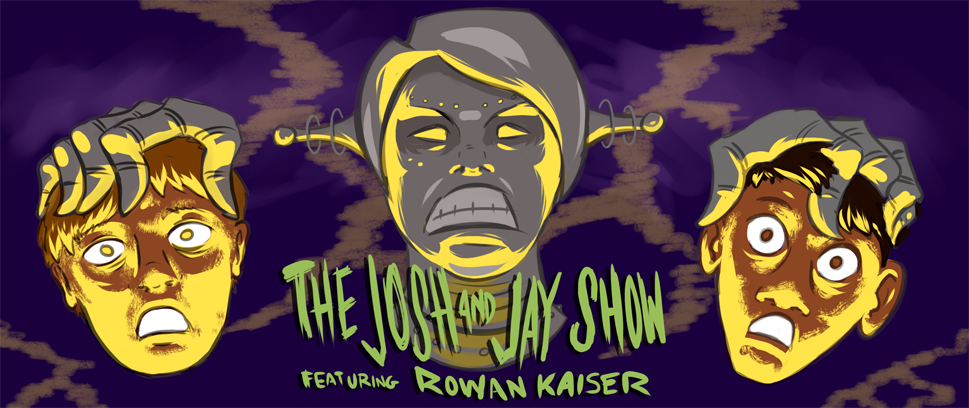
The Grimy Optimism of the Metro Series
In my last article for Unwinnable, I concluded my explication of why Fallout 4’s factions drive me up the wall by noting a general sense of malaise that Bethesda’s incarnation of the long-running series gives me. In spite of its bright colors, oldies on the radio, and the recurring lines about being “Prepared for the Future,” two hundred years and some change have gone by with the Wasteland still utterly destroyed. In the Capital Wasteland, in the Commonwealth, and even in irradiated Appalachia, the outside world is a hodgepodge of the worst elements of the Wild West: Small, unincorporated towns fight tooth and nail for their existence, kept afloat by a few violent cowboy-types.
If I were to tell you that the Metro series, which takes place roughly twenty years after a nuclear holocaust with humanity trapped in the tunnels under Moscow and beset by a nuclear winter and hordes of vicious mutants, was the more optimistic of the two games, you might have your doubts.
The causes of the respective big booms differ greatly. In Fallout, the Great War emerges after two centuries of hyper-American Jingoism in the aftermath of the second World War, a war of resources from a nation that never seemed to undergo the cultural reckonings of our real world. In Metro, we’re not given a lot. Our main character, Artyom, was a small child when the bombs fell, and the people that made it into the Moscow metros were far too focused on survival to catalog exactly what pushed everything over the edge.
Fallout 4 opens with the day of reckoning in 2077, a perfect day suddenly ignited by the sirens of incoming nuclear hell. We even get to see the bombs drop as we’re lowered into the vault, and stashed away as a popsicle for two hundred years. There’s a closeness with the war, even two centuries after. The world of Fallout is still a world drowning in Americana. The only records that seem to have survived are old crooners’ hits, most of which center on a nuclear future. Old buildings still bear posters from those days, hinting at the latent darkness within the gilded America of the time.
Meanwhile, Metro only gives us flashbacks to those days, bitter hallucinations in the wreckage of a crashed civilian airplane, trapping us in the mortal terror of those last moments before the world was sent towards Hell.
Khan, a recurring character in the Metro games, suggests that the nuclear blasts fragmented pieces of Heaven and Hell onto the mortal plane. Nothing is left untouched, either physical or metaphysical. The bombs touch all.
Artyom is a man who has lived his entire life in the aftermath of the Nuclear War. Humanity has endured via a complex civilization of city-states, most of which have some political alignment. Trade is fraught with danger and scarcity, but it endures nonetheless. People brew liquor from mushrooms; they share food even when it is scarce; bullets are expended in the constant defense against the darkness.
It is definitely nowhere near perfect, but there’s a sense of forward momentum in the tunnels.

Bethesda’s Fallout does no such thing. Despite taking place ten times farther into its post-war future, the United States Wastelands have little. An unimaginable number of raiders roam the wasteland, snorting hallucinogenic drugs partly made with fecal matter. People still scrounge the preservative-drenched foods that were unopened when the bombs fell. Most of the weapons are scavenged. Even the civilizations that emerge in the Wastelands fail to have any reasonable investments in the future. Players find merchants in the cities, but they don’t find blacksmiths, farmers, engineers, artists, etc.
The arc words of the Fallout series are oft-repeated by Ron Perlman: “War. War Never Changes.” Perhaps, it argues, neither do people. The Wastelands are characterized as deeply antisocial places that are largely stagnating, poppy music and orchestral swells aside. They are direct descendants of the hubris, vile rhetoric, and apathy that dominated the years before the bombs fell. There are exceptions, but I’m always left feeling like I am the only person trying to make meaningful change when I play Bethesda’s Fallout. Everyone else is content to waste away in the corpse of the old world. Being prepared for the future means nothing when no one makes an effort to learn from the past.
I can even buy a Fat Man (a nuclear bomb) from a random merchant, alongside a few mini-nukes, and fling more hellfire at other people. The geiger counter always has a reason to tick upwards. The comedy of “Atom Bomb Baby” crooning as I reduce a pod of enemies to ash and skeletons is incredibly cynical. The game’s refusal to discuss the continued fetishization of nuclear violence takes that tongue-in-cheek tone and only makes it more sinister.
The world of Metro is besieged by violent faction conflict, too, but the people caught in the crossfires are often just trying to get by. There’s a sense of solidarity in the struggle in the subways. Artyom meets all sorts of strangers just trying to get by, many of whom actively involve themselves in the struggles of others. The Rangers, the faction that Artyom shacks up with on his 2033 expedition, are a more cogent version of Fallout 4’s Minutemen: a group entirely dedicated to the security and collective safety of the Wasteland, men willing to live and die by the commitments we make to one another.
Artyom engages in war, too. The Metro is under attack by a new species of mutated human – the “Dark Ones” who have psychic powers that induce madness in homo sapiens. Unable to read their incursions as anything but malicious, Metro 2033 centers around Artyom’s journey to defeat them. We finally are able to do so, calling upon a few nuclear warheads to cleanse them.
The last words Artyom hears projected are a single-minded call for peace, but it is too late to call back the bombs. There is no glory in victory, but abject horror at succumbing to the same blood-hunger that has already destroyed the world once over.
War Never Changes, but Last Light is all about Artyom making people change, instead.
After discovering a Dark One child, Artyom decides to try and salvage what he can of that great mistake. The canon ending of the game is about brokering a peace between the humans and the remaining Dark Ones. Even in the aftermath, Moscow is still deeply divided, imperfect, but the people there are present for one another. They create, cook, brew, paint – they are doing more than surviving, but living.
The people there don’t want to set the world on fire once again. They want to keep it turning as best it can.
———
Joshua M. Henson has been playing video games since Doom II at the age of four, and hasn’t shut up about them since. You can find him on twitter posting very occasionally.




